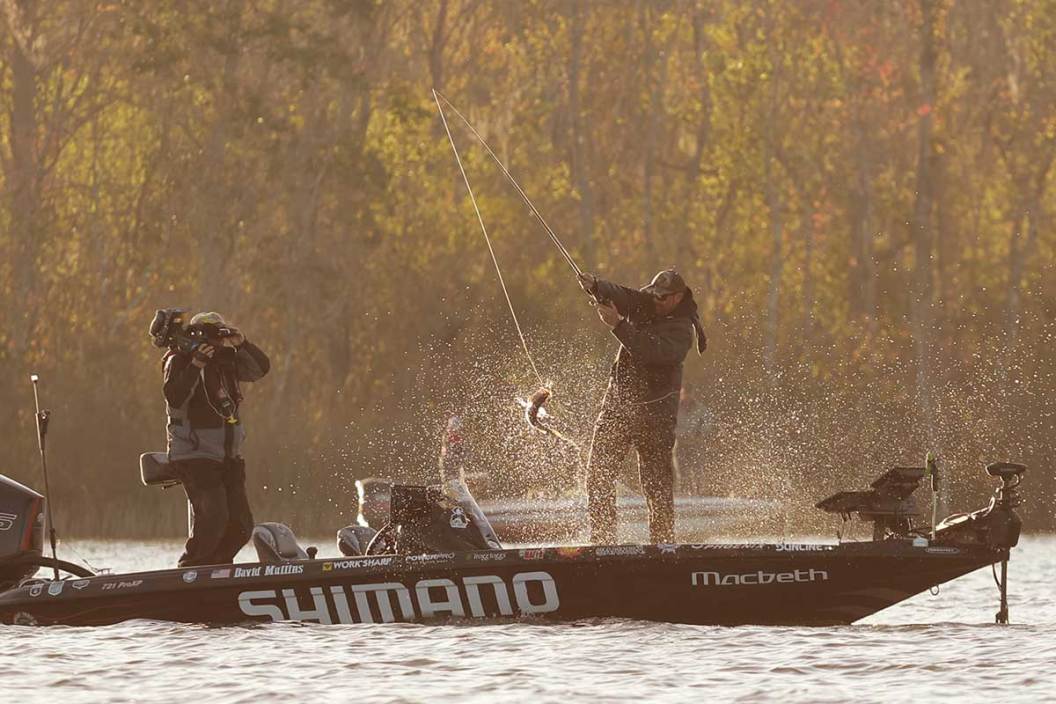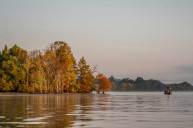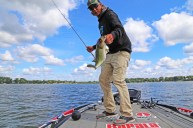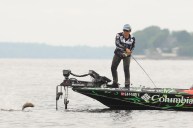A warming trend will likely influence where and how anglers fish for the Bassmaster Classic title.
Seven years ago, Bassmaster Classic competitors struggled to launch boats that were literally frozen to trailer bunks, compliments of brutally cold winter conditions befalling Lake Hartwell. This year the 56,000-acre Savannah River reservoir will greet the field of 55 competitors with significantly warmer weather that will greatly impact the unfolding of the 2022 Academy Sports + Outdoors Bassmaster Classic presented by Huk.
The weekend prior to the March 4 start of this three-day event saw daytime highs falling into the mid to upper 50s, but they should be rising into the upper 60s to mid 70s for the tournament. This warming trend will likely bear measurable impact on the event, particularly if water temperatures rise quickly.
First, we'll take a look at the lake hosting the 52nd Bassmaster Classic, and then share some of the pertinent details as we approach Day 1.
The Playing Field
Straddling the Georgia/South Carolina border, Lake Hartwell was impounded in 1962 by its namesake dam, seven miles downstream from the confluence of the Tugaloo and Seneca Rivers, which creates the Savannah. Reaching 49 miles up the Tugaloo and 45 into the Seneca, Hartwell reaches 185 feet deep and averages 45 feet.
Common offshore habitat features include channel swings, humps, rock piles, ledges, islands and standing timber. The shallow water game typically focuses on laydowns, stumps, and docks. Hartwell also holds a significant number of planted brush piles and the much taller "cane piles," made of anchored bamboo clusters.
Often standing up to 15-20 feet off the bottom, these structures tend to be more relevant during the warmer months when bass hunt bait schools hovering overtop. Cane piles are typically placed along favorable bass migration routes, so their lower sections may serve as stopping points for bass moving into prespawn areas.
Recent habitat restoration work by the South Carolina Department of Natural Resources has bolstered Hartwell's features with approximately 105 concrete culverts/structures, 1,300 stumps, 560 tons of broken concrete slabs, 180 tons of riprap, five tons of pea gravel, 120 PVC artificial fish attractors, 150 bamboo fish attractors, 815 trees cut/cabled from the shoreline and 1,200 maidencane plants.
The Variables
In its fourth appearance on Lake Hartwell, the Classic will hinge on a handful of variables.
Seasonal Advancement: Warming conditions will hasten the prespawn movement and possibly ignite the shallow to mid-depth range where staging fish feed heavily. That said, the event should still see a lot of quality fish caught offshore, where late winter patterns produce competitive bags.
Species Split: Hartwell has a huge population of spotted bass, along with good numbers of largemouth. While spots may reach 3-4 pounds, anglers must weed through lots of 1- to 1 3/4-pounders to find something that reaches 2-plus.
A common strategy: catch a limit of spots and then seek a kicker largemouth. Some may target only the latter and trade quantity for quality. Generally, Hartwell competitors turn in some version of a mixed bag.
Bait Busters: Along with native forage, Hartwell has a lot of blueback herring, an anadromous species (saltwater fish that spawns in fresh) accidentally introduced during the reservoir's early years. Herring play a huge role during summer and fall, when schooling activity offers great topwater opportunities.
While that's less common in March, many of Hartwell's bass have become almost exclusively focused on following the nomadic herring, so anytime a school surfaces or moves through an area, furious feeding could occur. The angler that capitalizes on this can boost their bag in a hurry.
Spectator Boats: It's part of the show, and competitors appreciate the applause and encouragement from the fan flotillas that follow them. However, the extra traffic can impact shallow water clarity as well as angler mobility, so this must be considered.
Tournament Format
The Classic field will represent the Bassmaster Elite Series, St. Croix Bassmaster Opens, TNT Fireworks Bassmaster B.A.S.S. Nation Series, Strike King Bassmaster College Series and the Bassmaster Team Championship. The top prize is $300,000, with each competitor guaranteed $10,000.
This year's field includes North Carolina pro Hank Cherry, Jr., who won the last two Classics at Lake Ray Roberts (2021) and Lake Guntersville (2020). With last year's victory, Cherry joined an Elite group of anglers who've notched back-to-back Classic wins. Only Rick Clunn (four total Classic titles), Kevin VanDam (four), and Jordan Lee (two) had previously achieved this.
There will be a free kickoff party with live music, games, concessions, and fireworks from 5:00-8:00 p.m. Eastern Time on March 3 at Fluor Field in Greenville, S.C. The official competition will stretch from March 4 to 6, with takeoffs from Green Pond Landing & Event Center in Anderson, S.C. happening at 7:00 a.m. Eastern Time each day. Weigh-ins will be at the Bon Secours Wellness Arena in Greenville, starting at approximately 4:30 p.m.
The free-to-attend Bassmaster Classic Outdoors Expo will be March 4-6 at the Greenville Convention Center.
NEXT: HANK CHERRY TALKS POSSIBLE THREE-PEAT AHEAD OF 2022 BASSMASTER CLASSIC




